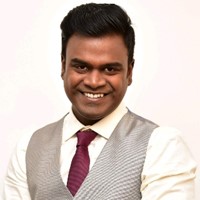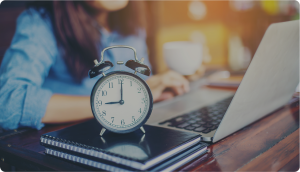
While the circular only pertains to government schools, it is a clear indication of the increasing importance of a good library management system for all schools. Digital library software helps in digitally organizing, cataloging and managing both physical and digital books. Learners prefer a digital environment that allows them to access information as needed rather than the restrictions of visiting a traditional library at specified times.
13 Benefits of a digital library for students and management
A new generation of students brings a new set of expectations. Young people have had electronic access to information all their lives and so their expectations from a school or higher education library are different from previous generations. The institution’s library has to change with evolving needs and a digital library is an inevitable way forward.
Educational institutions are rethinking how their physical spaces can integrate with students’ electronic workspaces in a collaborative manner. The availability of electronic access to information will not do away with physical libraries because educational libraries have always been more than just books and it is also more than just technology. Libraries today offer more services such as special training programs, rooms for student collaboration on projects, etc.
Here are the reasons why a digital library with web-based access is gaining preference in both schools and colleges.
- No physical boundaries – Digital libraries provide students with the comfort of learning from anywhere or knowing the availability of books they need to physically checkout
- Multiple access– Many students can access digital books at the same time unlike in a traditional library where if a book is checked out a student has to wait for its return
- Preservation of resources– physical books deteriorate over time in a conventional library. However, when content is digitized using software into ebooks, audiobooks or video, these resources will never deteriorate and info can also be updated or added to.
- Books checked out vs. ebooks read.This allows librarians to compare the level of demand for physical vs. electronic media and base policy decisions on this.
- Integrated with SIS – Usually, a library management system is integrated with the student information system. This makes membership, fines, and other subscriptions easier to manage.
- Easier stock-taking– This is usually a cumbersome process but with RFID technology and Barcode systems, inventory management becomes easier as data can be read much faster. Reports can be quickly generated on any missing inventory and aid in new procurement.
- Back-up support– Data is regularly backed up and since this is saved in the cloud it ensures that in case of any unforeseen circumstance there is minimal loss.

Also read: What Features Should Your Library Management System Have?
The technology involved in digital libraries
A library management system works on two types of technologies – either RFID technology or a Barcode system. The Barcode System is an arrangement of bars that denote numbers and letters. In the library management system, each barcode image in the library will identify the author’s name, title, volume and any other information required. The information is read using a barcode scanner that works in line of sight, which means it will read one barcode image at a time.
An RFID system or Radiofrequency Identification uses RFID tags. Since they use radio frequency, multiple RFID tags can be read at once and this makes it easier to automate many processes. While they are more efficient, they are also more expensive and implementation is a long process. This is why barcode technology may be a better option for school libraries.
While the two technologies above are an important part of a library management system, there is another technology needed to convert physical documents to digital books. This technology uses optical character recognition (OCR) along with document scanning software. More advanced systems also integrate AI technology for understanding the documents and cataloging them correctly, among many other features.
Edumate’s library management module
Edumate is the proprietary Education ERP developed by iTech and deployed by many of the leading educational institutions in India. Library management software is one of the modules that can be implemented separately or as part of the SIS.
The Edumate LMS has various subsystems as in the diagram below and more information about it is available here. When it comes to digitizing physical books and documents, iTech has another proprietary software known as DocExtract which uses AI and natural language processing to convert large numbers of physical documents into digital documents or eBooks. This technology is not available in most other library management software.

iTech India has been providing customized software solutions since 2003. We specialize in Education ERP with a product portfolio built on best practices. We have distinct product offerings for different segments from schools, colleges and coaching institutes. With a large team of technically qualified professionals and mentored by educational experts and technology architects, we are recognized for our cutting-edge ERP solutions.
Contact us for a consult on your library management system requirements or have a closer look at the features available in our proven Education ERP platform – Edumate.

Rajesh A
Rajesh brings 14 years of experience in business development in the technology space. Education ERP implementation can be a complex project but when the project has an experienced hand at the helm, business-critical initiatives are smoothened out.



